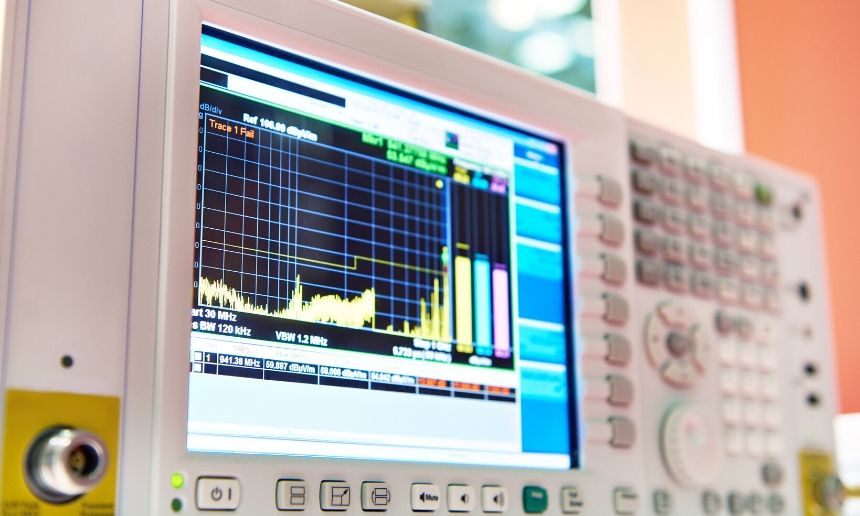How to Measure EMI Shielding Effectiveness

Limiting emitted electromagnetic frequencies is the principal goal of EMI shielding. To test the degree to which shields block EMI, you can run one of several tests that measure devices’ attenuation, or reduction in EMI intensity. If you would like to learn more about how to measure EMI shielding effectiveness, read our guide to four prominent tests.
Open Field Test
A device’s electromagnetic interference emission affects other devices when they interact in natural, everyday conditions. For this reason, it’s often wise to test completed devices’ EMI emission without taking too many variables away. This way, you get a better picture of how the device will function during regular use. Also called the free space test, the open field test involves using testing equipment in an open area without other electrical devices nearby. Testers place antennae at varying distances to measure EMI emission at several different points.
Shielded Box Test
Another method for measuring EMI shielding effectiveness is the shielded box test. This is useful for determining the effectiveness of potential shielding materials. True to its name, this test involves an almost-completely sealed box that blocks external EMI. There is one opening for users to insert shielding materials. To determine the material’s overall effectiveness, the equipment measures the difference between internal and external EMI. More effective material prevents EMI from reaching the shielded box’s interior. At Deep Coat Industries, we conduct rigorous testing to ensure our EMI shielding solutions are as effective as possible.
Coaxial Transmission Line Test
One drawback to a shielded box test is making sure the material introduced contacts the box opening so measurements are accurate between trials and different labs. Coaxial transmission line tests don’t allow for these inaccuracies. This method involves a diamond-shaped structure in which a tester places a sample EMI shielding material. The equipment measures EMI levels at several different frequencies, which is a unique feature among the various test options. Testers then compare EMI measurements to a control to determine material effectiveness.
Shielded Room Test
The shielded room test is a particularly comprehensive iteration of the shielded box method. The most important feature of the shielded room test is the elimination of potential measurement device interference by positioning measuring devices in a separate room from the tested material. This increases the reliability of results when compared with the shielded box method.
If you want to ensure that you shield your devices appropriately, consider utilizing Deep Coat’s vacuum metalizing services. We back our customizable vacuum metalization methods with our considerable team-wide knowledge and experience. Contact us if you have specific questions about how vacuum metalization can shield your product.